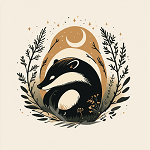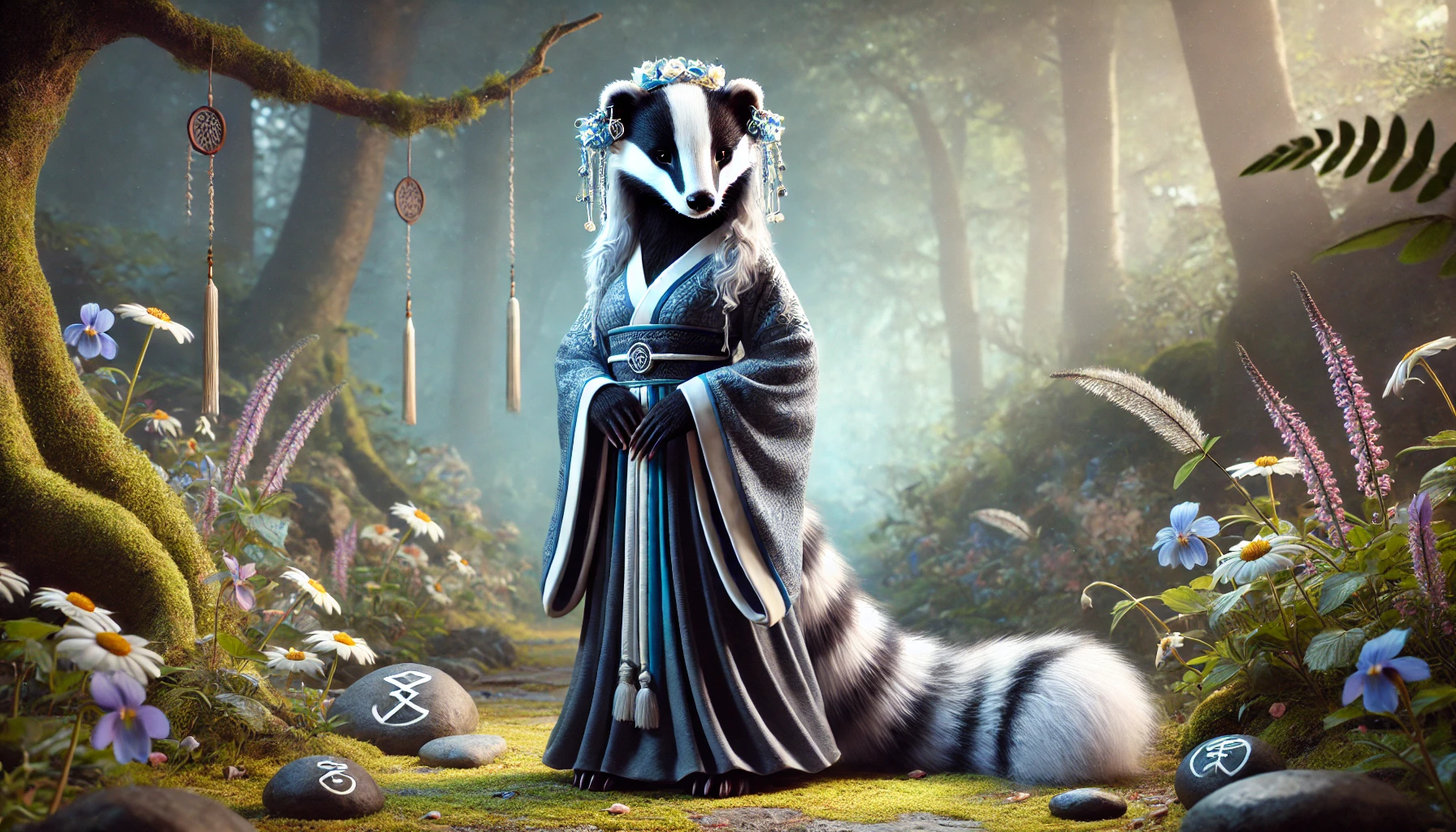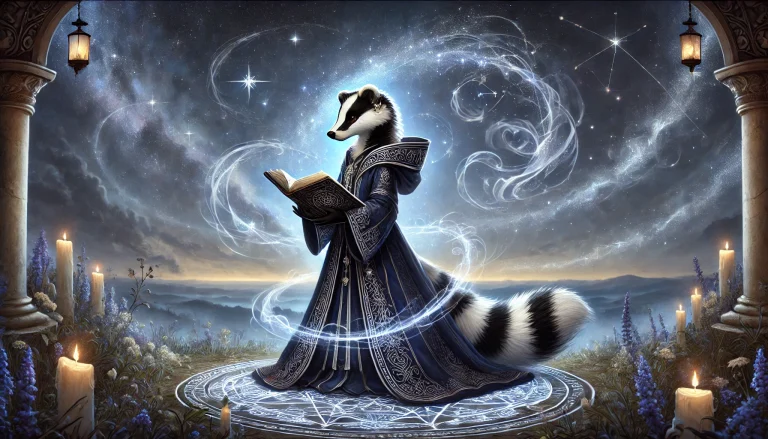The Runes: History, Magic and Practices
Index
Introduction: Fascination with the Magic of the Runes
The runes fascinate those who seek to understand not only the history of writing, but also the hidden power of sacred symbols. Since their creation, runes have always been more than an alphabet for communication. They represent a deep connection with the spiritual and the magical, a system that combines language and mysticism. Runic development has taken two directions since the beginning: as a writing system and as a collection of magical elements, used to create amulets, perform spells and make predictions.
Each rune carries a powerful and unique meaning, capable of establishing a connection with the higher powers of the world of the gods of the North. More than tools of divination, they are seen as guides that reveal paths of transformation and healing. With a history rooted in ancient mysteries, the runes remain alive as a tradition that invites self-knowledge and an understanding of the cycles of life.
Origin of the Runes
The runes have their origins in ancient Nordic culture, and their emergence is linked to legends and ancient wisdom. They are known as the FutharkThe name is derived from the first six runes of the original alphabet. According to Norse legends, Odin, the father of the gods, sacrificed himself and received the secret of the runes as a sacred revelation. It is said that he whispered the runic mysteries into the ear of Baldur, his son, before sending him to Valhalla, the realm of the dead warriors.
Each rune is considered a sacred formula, symbolizing a specific magical power. This power goes beyond ordinary writing and represents the energy of natural elements and spiritual forces. Runes were initially used not only as linguistic symbols, but as energy channelers and magical symbols. They were applied for communication, divination, healing and sacred rituals, allowing those who mastered their use to connect with the energy of the gods.
In total, the runes are divided into a system of 24 sacred symbols, each with its own strength and capacity. In some contexts, a twenty-fifth rune is included, called Wyrd or White RuneThese runes represent destiny or absolute mystery. Together, all these runes form an active and powerful magical system, a legacy that has survived through the centuries.
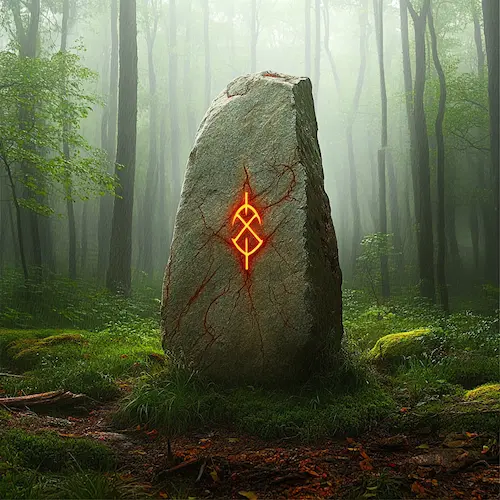
Futark: Rune Values and Distribution
To understand runic magic, it is essential to know its origins and its deep meaning. Although there are different types of runic alphabets known as Futhark, not all of them have the right magical power to achieve specific goals. The term "Futhark" refers to all types of Germanic and Scandinavian runic alphabets and derives from the first letters of the initial six runes: Fehu, Uruz, Thurisaz, Ansuz, Raido e Kenaz.
Difference between Futharks
The best-known runic alphabets include the Elder Futhark (or Old Futhark) and the Younger Futhark (or Futhark Junior). Although the difference between them may seem small, it is significant in the magical context. The Younger Futhark, for example, was created to meet everyday and linguistic needs and therefore lacks the mystical power of the Elder Futhark. In ancient times, the Younger Futhark was used for practical writing, while the Elder Futhark held a sacred value, reserved for mystical practices and never used for domestic purposes.
Elder Futhark: The Sacred Runic Alphabet
The Elder Futhark is one of the oldest and most revered runic alphabets, containing 24 runes, which are divided into three groups of eight symbols called Aettir (or Aett). These groups have a deep symbolism within the Germanic and Nordic tradition, as both the number 3 and the number 9 were sacred to these peoples. Each rune has a specific meaning and function, related to themes such as prosperity, protection, fertility and enlightenment.
Many practitioners also consider a twenty-fifth rune, called Wyrd or White Rune, which represents fate or the unknown. However, this rune is a more modern addition and was not part of the original Elder Futhark. The tripartite structure of the Aettir also reflects the different worlds of Norse cosmology: the first Aett symbolizes the world of humans (Midgard), the second refers to the world of the dead (Hel), and the third to the world of the gods (Asgard).
The Aettir of the Elder Futhark
First Aett - Aett of Freyr and Freyja
- Fehu - It represents material well-being, symbolized by "cattle" or "property".
- Uruz - Translated as "bull" or "strength", it governs physical health and vitality.
- Thurisaz - It represents an indomitable and destructive force that can break down barriers.
- Ansuz - Translated as "God", it is associated with wisdom and communication, especially Odin.
- Raido - It means "path" and symbolizes both physical and spiritual journeys.
- Kenaz - It symbolizes the "torch" and represents creativity and enlightenment.
- Gebo - Known as a "gift", it represents unity and exchanges between people.
- Wunjo - Translated as "joy", it symbolizes fulfillment and happiness.
Second Aett - Heimdall's Aett
- Hagalaz - "Hail"; represents destructive force and chaos.
- Nauthiz - "Need" or "scarcity" symbolizes trials and endurance.
- Isa - "Ice"; represents stagnation and paralysis.
- Jera - "Year"; symbolizes the harvest and deserved results over time.
- Eihwaz - Associated with the Yggdrasil tree, it represents protection and spiritual knowledge.
- Perthro - Although its translation is uncertain, it is associated with the phoenix and rebirth.
- Algiz - "Moose"; represents protection and spiritual connection.
- Sowilo - "Sun"; symbolizes light, victory and clarity.
Third Aett - Aett of Tyr
- Teiwaz - "Tyr"; symbolizes courage, victory and overcoming.
- Berkana - "Birch"; associated with female fertility and the home.
- Ehwaz - "Horse"; symbolizes movement and progress.
- Mannaz - "Man"; represents society and human relationships.
- Laguz - "Water"; refers to the fluid aspect of life and intuition.
- Inguz - "Ing"; linked to male fertility and growth potential.
- Dagaz - "Day"; it symbolizes a new beginning and the emergence of light.
- Othala - "Home"; represents heritage, family and security.
The Value of Separation in Aettir
The division of the Elder Futhark into three Aettir is not just a practical convenience; it reflects the deep symbolism of the ancients. Each Aett is seen as representing different aspects of life and the realms of Norse cosmology, bringing a spiritual dimension to each group of runes. In addition, some traditions suggest that these groups represent distinct spheres of influence, such as protection, luck, wisdom, and healing, each with their own specific magical functions.
The Controversy over Other Organizations
Within modern traditions, some theories question the position of the runes within the Futhark, such as the so-called Utark, which proposes that Fehu should be the last rune instead of the first. However, these interpretations are not widely accepted, both because of the lack of historical basis and the absence of esoteric backing. In magical practices, it is recommended to follow the Elder Futhark in its traditional structure, focusing on ancient knowledge.
For those wishing to begin practicing with the runes, the Elder Futhark offers a clear structure and a solid foundation, being the most complete and reliable alphabet for magical and divination purposes. Understanding the structure and energy of each rune, aligned with the study of the Aettir, gives the practitioner a powerful tool to connect with ancestral energies and transform their destiny.

How to Make the Runes Work in Your Favor
To use runes effectively, it is essential to follow an organized magical process, which involves choosing, activating and tuning in:
- Character RegistrationSelect the runes that correspond to your specific purpose and inscribe them on an appropriate material, such as wood, stone or paper.
- Activation: Awaken the magical energy of the runes. Traditionally, this was done with a drop of blood, but today many practitioners choose to activate them with ink or other less invasive methods.
- TuningConcentrate on the intention of the spell, directing the energy of the runes to obtain the desired result. Visualize the result and channel the energy until you feel that the runes are "active".
These steps help you channel the energy of the runes precisely, allowing you to achieve your goals more effectively.
Runes and Magic: How Ancient Sorcerers Did It
Ancient sorcerers and shamans followed a specific ritual when using runes in magical practices. The following steps represent the traditional method:
- Inscribing the RunesThe runes were engraved on durable materials such as wood, stone or metal, symbolizing the permanence of the spell.
- Blood ActivationTo bring the symbols to life, practitioners would lightly wound themselves and use their blood to color the runes, believing that this strengthened the bond between the rune and the practitioner.
- Pronunciation and gesturesThe names of the runes were pronounced aloud while the symbols were drawn in the air, creating a verbal and energetic connection.
- Ritualistic danceThe ritual was often accompanied by dances to intensify the energy and direct the spell.
These rituals aimed to awaken and channel the magical energy of the runes in order to manifest the practitioner's purpose.
The Beginning of the Ritual: Preparation and Choice of Runes
When starting a ritual with runes, the preparation and choice of runes is essential:
- Task StatementClearly define the purpose of the spell. The statement can be short and to the point or detailed, depending on the complexity of the intention.
- Choice of Runes: Use intuition and the subconscious mind to select the runes that best align with your purpose.
- Text formulationCreate a runic "text" that describes the combination and the intention of the chosen runes. Here are some examples of common combinations:
- Thurisaz repeated 4 times: To attract love.
- Ansuz, Gebo, Othala: For family harmony.
- Dagaz, InguzFor health and longevity.
- Kenaz, Gebo, Laguz: To attract love.
- Dagaz, Berkana, InguzTo cure infertility and ensure a good birth.
- Fehu, Sowilo, Othala, Wunjo: To attract good luck.
Runic spells
There are combinations of runes known for specific purposes, according to traditions:
- ProtectionAlghiz, Isa, Berkana, Eihwaz.
- Universal RunesEihwaz and Hagalaz (can be used in various spells).
- Love Attraction: Gebo.
- Submission and Control: Nauthiz.
- Consolidating friendly ties: Wunjo.
- Damage and Destruction: Kano.
- Joy and Goodness: Dagaz.
These combinations help to direct and intensify the power of the runes, creating effects aligned with the desires and intentions of each practitioner.
Practical considerations
To perform effective runic magic, there are some additional practices to be observed:
- Writing DirectionTraditionally, runes are inscribed from left to right, but they can be positioned vertically for aesthetic purposes.
- Amulet materialChoose from paper, wood or even photographs.
- Choice of locationIt can be done in a variety of places, such as apartments, riverbanks or gardens.
- Time: The time of day does not significantly affect the results.
- AltarUse a table, a tray or a mat as a ritual surface.
- LightingThe light can be provided by a candle, bonfire or lamp, creating an atmosphere conducive to concentration.
For those just starting out, it is advisable to use only one or two runes in the initial spell, avoiding very complex combinations until they feel confident. Some auxiliary runes, such as Sowilo (for strengthening), Inguz (for duration) and Fehu (for direction), can help stabilize the spell.
ImportantFaith in runes and magical practice is essential for success. Skeptics may find fewer results or even negative effects. Approaching runic magic with respect and clear intent is fundamental to success.
Conclusion
Runic magic, rooted in ancient traditions, continues to fascinate and inspire modern practitioners all over the world. By inscribing runes, ritually activating them and attuning them to specific intentions, it is possible to channel powerful energies to achieve a variety of goals, from protection and healing to love and prosperity.
Understanding the deep symbolism and respecting the history of the runes allows practitioners to access a source of wisdom and power that transcends time. This practice must be approached with seriousness and awareness, recognizing that true magic lies not only in the symbols, but in the practitioner's intention and spiritual connection.
The runic tradition, including elements of shamanism, reminds us of the importance of living in harmony with the natural world. By integrating these teachings into our lives, we can gain personal benefits and also contribute to a more balanced and respectful world. May the runes guide your path with clarity and purpose, bringing strength and wisdom to each ritual.
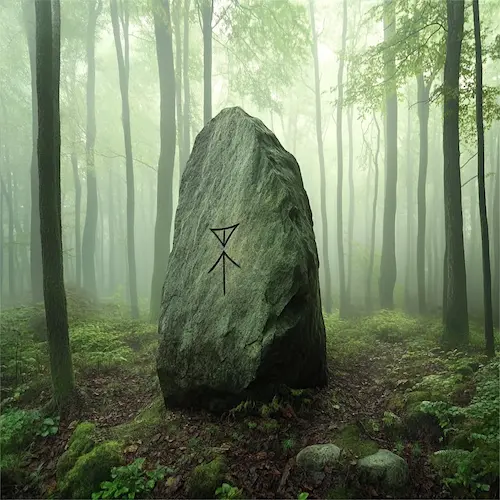
Learning about the Runes
Learning about runes goes beyond simply memorizing their meanings. It's about deciphering the sacred images they represent, translating them into words and understanding their mysteries. Divination with runes is a practice that challenges our mental and spiritual knowledge, leading the seeker down a path of continuous learning. This secret is not something hidden in the unknown, but a wisdom that attracts and inspires the practitioner, propelling them on a journey of attempts, realizations and discoveries.
So rune reading, whether in person or online, cannot be reduced to a simple or specific divination technique. The correct use of runes comes from constant practice, intimacy with the symbols and experience acquired over time. They are an ancient writing code, refined over the millennia, and can be used for divination, guidance, creating amulets and even as a form of horoscope.
Runes demand respect and commitment. They don't tolerate disregard or dismissive attitudes; if you don't have the confidence to consult them, it's best to avoid questioning them superficially. Without proper intention and respect, the result will not be true.
How to Read the Runes Correctly
The question "How do I read the runes correctly?" comes up frequently, but the answer goes beyond the obvious and requires dedication. To perform a runic reading, you need a complete set of runes, which contains 24 pieces (or 25 if you include the Wyrd rune). They can be made of stone, wood or any other natural material. We will soon be providing a guide on how to create your own runes.
The choice of date and time for the reading can be guided by the runic calendar, and it is important to follow certain rules to ensure an accurate interpretation:
Rules for Reading Runes
- Avoid repeated questionsEach question should be asked only once. Repeating the same question can impair the clarity of the answer.
- Maintain impartiality: It is essential to be neutral and impartial when reading the runes. Any change in energy can affect the interpretation.
- Look for new insightsIf you are already sure about something, avoid consulting them just to confirm it, as this limits the potential of the reading.
- Respect the energy of the runesRemember that they have their own powerful energy, which should not be used lightly.
By following these guidelines, you will gradually begin to unravel the mysteries of your own rune reading, allowing the runes to reveal their messages clearly and truthfully.
How to Read Runes at Home
Preparing for Reading
To perform a rune reading, you'll need a set of runes and a solid-colored cloth to place them on. The color of the cloth can be chosen according to your preference, but ideally it should be a single color to avoid distractions.
The first step is to harmonize your energy with that of the runes. Choose a quiet environment, free from noise and people, as they can interfere with the energy and concentration needed for reading. You can also light incense or candles to create a peaceful and comfortable environment, helping to establish an atmosphere conducive to the practice.
At your chosen location, spread the cloth out on the floor or on a table. Hold your bag of runes in your right hand and breathe deeply, concentrating on the question or advice you wish to seek. This moment of connection is fundamental to attuning your energy to the runes.
Reading
- Prepare and Mix the Runes:
With the bag of runes in hand, shake it lightly while keeping your focus on your question. When you feel ready, gently pour the runes onto the fabric, turning them all symbol side down. Use your right hand to move them in clockwise circles until you feel an intuition or sensation indicating that it's time to stop. - Tuning and Choosing the Runes:
Place your hands about nine centimeters above the scattered runes. Take a deep breath, concentrating and asking for guidance from the Norse gods, such as Odin and Freyja, so that the runes reveal the truth you seek. Close your eyes and allow the palms of your hands to become aware of the sensations coming from the runes. As you run your hands over the runes, notice if any seem hotter, colder or more vibrant than the others. These runes emit an energetic response and are the ones you should select for the reading. If, for some reason, you don't feel any connection, mix the runes again and try to concentrate more deeply. - Interpretation:
Each rune you choose has a unique meaning, a "voice" of its own, which must be interpreted with attention and respect. Try to feel what each rune is saying to you. Reflect on the names of the runes and what they represent, allowing their messages to take shape in your mind. - Random Drawing Technique:
An alternative approach is to do a "random draw", where you allow the runes to reveal themselves without a specific question in mind. This practice helps you get a spontaneous overview of the most important aspects that need your attention. At first, this technique may seem confusing, but over time, you will develop an intuitive familiarity with your runes, and the messages will become clearer.
Final considerations
Reading runes is a practice that requires patience and openness in order to receive the messages they reveal. It's important to remember that if you don't feel a connection during the reading, it may be more appropriate to postpone the ritual until a time when you feel more in tune. Each rune carries its own story and meaning, and the practice of reading allows you to explore its nuances and meanings in a personal and enriching way.
With time and practice, reading the runes will become a valuable tool for self-knowledge, guidance and spiritual connection.
Simple Meaning of Each Rune
First Aett - Aett of Freyr and Freyja
- Fehu: Prosperity and abundance. Represents material wealth and achievement.
- UruzPhysical strength and vitality. Symbolizes health and personal power.
- ThurisazProtection and resistance. Associated with barriers and defense.
- Ansuz: Wisdom and communication. Reflects inspiration and learning.
- RaidoJourney and progress. Indicates both physical journeys and spiritual development.
- KenazCreativity and enlightenment. Represents the "torch" of knowledge and healing.
- GeboAlliance and exchange. Reflects gifts, partnerships and generosity.
- Wunjo: Happiness and success. It means fulfillment and harmony.
Second Aett - Heimdall's Aett
- HagalazAbrupt change and destruction. Associated with events that purify and rebuild.
- Nauthiz: Necessity and restriction. Refers to obstacles that require perseverance.
- IsaStagnation and containment. Represents pause, concentration and control.
- JeraCycles and rewards. Symbolizes harvest and positive consequences.
- Eihwaz: Transformation and spiritual protection. Represents the balance between life and death.
- PerthroMystery and destiny. Associated with the unexpected and self-knowledge.
- Algiz: Divine defense and protection. Indicates safety and spiritual support.
- Sowilo: Victory and success. Reflects the power of the sun and positive energy.
Third Aett - Aett of Tyr
- Teiwaz: Courage and justice. Represents victory in disputes and the search for truth.
- BerkanaFertility and growth. Refers to birth and renewal.
- Ehwaz: Movement and progress. Symbolizes progress and positive change.
- Mannaz: Humanity and cooperation. Indicates relationships and social interactions.
- LaguzIntuition and flow. Represents the energy of water and emotions.
- Inguz: New beginnings and male fertility. Indicates transformation and growth potential.
- Dagaz: Enlightenment and change. Represents dawn, renewal and the end of a phase.
- Othala: Inheritance and home. Refers to legacy, family roots and stability.
Conclusion
Runes represent a deep connection with the ancestral and spiritual world and are more than just symbols of divination. They carry within them an ancient wisdom that guides, protects and brings clarity to practitioners. Throughout this article, we explore the meaning and power of each rune, their structure within the Futhark and the practices that allow us to harmonize their energies in our lives.
Runic practice requires dedication, respect and an openness to self-knowledge. Reading and interpreting runes is a continuous learning journey, where each consultation deepens our understanding and connection with runic symbolism. Whether through creating amulets, searching for answers or strengthening spirituality, runes remain a powerful tool for those who approach them seriously and with a clear intention.
May this guide serve as a starting point for your journey with the runes and may you find clarity, protection and wisdom along the way. May the runes reveal their messages and bring transformation, guiding you towards a more balanced and conscious path.
I'm passionate about magic and spirituality, always looking for new knowledge about rituals, energies and the mystical universe. Here, I share magical practices and spiritual tips for those who want to connect more deeply with themselves and the world around them, all in a light and accessible way.
